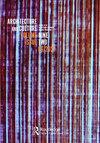The Perforated Welfare Space: Negotiating Ghetto-Stigma in Media, Architecture and Everyday Life
IF 1.8
0 ARCHITECTURE
引用次数: 2
Abstract
Abstract The Danish postwar social housing developments originally epitomized the dawning welfare state, promoting ideals of equity and community. Today, a number of these neighborhoods have come to occupy the reverse role and are publicly represented as “parallel societies,” “ghettos” or even “holes in the map of Denmark,” thus perforating the welfare state as a socially coherent space. Based on a media analysis and field studies in the so-called “hard ghettos,” this paper relates current media representations of disadvantaged Danish neighborhoods to architectural and residential ways of coping with territorial stigma. We argue that media representations of these housing developments contribute to rendering them spatially and socially detached from the surrounding society and that the architectural attempts to open up these housing developments may, in some cases, reinforce the stigma, further perforating the neighborhoods. Residents contest the stigma, yet those who can do so tend to detach themselves from the stigmatized neighborhoods.穿孔的福利空间:媒体、建筑和日常生活中的贫民窟污名
摘要丹麦战后的社会住房发展最初是福利国家的缩影,促进了公平和社区的理想。如今,这些社区中的一些已经扮演了相反的角色,并被公开表示为“平行社会”、“贫民区”甚至“丹麦地图上的洞”,从而将福利国家作为一个社会连贯的空间。基于媒体分析和对所谓“硬贫民窟”的实地研究,本文将当前媒体对丹麦弱势社区的描述与应对领土污名的建筑和居住方式联系起来。我们认为,媒体对这些住房开发项目的描述有助于使它们在空间和社会上与周围社会分离,在某些情况下,开放这些住房开发的建筑尝试可能会加剧污名,进一步渗透社区。居民们对污名化提出质疑,但那些能够这样做的人往往会将自己与污名化的社区分离。
本文章由计算机程序翻译,如有差异,请以英文原文为准。
求助全文
约1分钟内获得全文
求助全文
来源期刊

Architecture and Culture
ARCHITECTURE-
CiteScore
0.80
自引率
0.00%
发文量
25
期刊介绍:
Architecture and Culture, the international award winning, peer-reviewed journal of the Architectural Humanities Research Association, investigates the relationship between architecture and the culture that shapes and is shaped by it. Whether culture is understood extensively, as shared experience of everyday life, or in terms of the rules and habits of different disciplinary practices, Architecture and Culture asks how architecture participates in and engages with it – and how both culture and architecture might be reciprocally transformed. Architecture and Culture publishes exploratory research that is purposively imaginative, rigorously speculative, visually and verbally stimulating. From architects, artists and urban designers, film-makers, animators and poets, from historians of culture and architecture, from geographers, anthropologists and other social scientists, from thinkers and writers of all kinds, established and new, it solicits essays, critical reviews, interviews, fictional narratives in both images and words, art and building projects, and design hypotheses. Architecture and Culture aims to promote a conversation between all those who are curious about what architecture might be and what it can do.
 求助内容:
求助内容: 应助结果提醒方式:
应助结果提醒方式:


